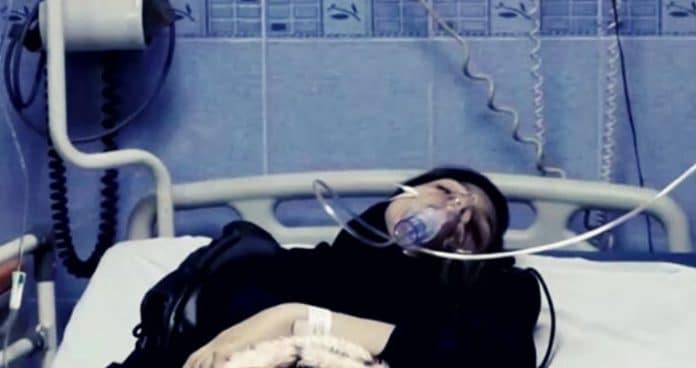A mysterious wave of schoolgirl poisoning has escalated in Iran with over 50 institutions reportedly affected so far. The sinister incidents have spread further fear and anger among parents in a country that has already faced months of unrest.
Reportedly, more than 1,000 girls have fallen sick since November 2022, when the first case emerged in the city of Qom. Videos shared on social media showed chaotic scenes as affected students are either escorted back home by their parents or taken to the hospital in buses and ambulances.
Victims reported complaints of headaches, heart palpitations, feeling lethargic, or otherwise unable to move. Some described smelling tangerines, chlorine, or cleaning agents.
Schoolgirl Poisoning in Iran Comes at a Critical Time
Concerned parents and teachers gathered in anti-government protests chanting “Basij, Guards, you are our Daesh,” comparing the Revolutionary Guards and other security forces to the terrorist group. Many elements blame the crisis on the Islamic Republic led by Supreme Leader Ayatollah Ali Khamenei.
The outbreak has come at a time when the country’s hardline leadership is facing massive backlash for enforcing their interpretation of Islamic laws. Nationwide protests erupted in September 2022 after Mahsa Amini, a young girl died in the custody of Iran’s controversial morality police, which monitors the public’s dress code. According to reports, this security force arrested her for not wearing the hijab (headscarf) properly and beat her to death.
Authorities deny the allegations but the entire country is still raging, with several women and girls removing their own hijabs in protests. Some even burned their hijabs to make their statement further clear against the extremist regime. The protestors also chanted slogans like “death to Khamenei” in demand to remove him from power and abolish the Islamic Republic.
It has led many to draw a connection between Amini’s killing and schoolgirl poisoning. Young women, mostly students, have been at the forefront of Mahsa Amini protests since the beginning. Critics argue that the extremist regime has been taking revenge on the girls for the ongoing demonstrations in the country. They alleged that the authorities were trying to intimidate girls, so they would stop going to schools or gathering in protests.
Women education has never faced such a huge challenge in the more than 40 years since the Islamic Revolution in 1979. The oldest son of the last Shah (King) of Iran, Reza Pahlavi, has urged the international community to pressurize Khamenei regime and demand a transparent investigation.
Response from the Government
As the criticism grew wider, the supreme leader spoke about the issue on the sidelines of an annual tree-planting ceremony. He called schoolgirl poisoning a “major and unforgivable crime” and for the perpetrators to be given “harshest punishment”.
While he did not offer any specific leads on the culprits behind the poisonings, he urged authorities to investigate thoroughly and bring the guilty parties to justice. The judiciary chief, Gholamhossein Mohseni Ejei, echoed Khamenei’s sentiments, vowing that the courts would act swiftly and responsible parties would receive death sentences.
On the other hand, some other government officials like Interior Minister, Ahmad Vahidi, downplayed the crisis and accused “western media” of inciting panic among the masses. However, it wasn’t until the incidents received the international media attention that the Islamist regime announced an investigation.
Target at the Backs of Women
In recent years, violence and discrimination against women in Iran have intensified to alarming levels. In 2014, 4 women in Isfahan were attacked with acid while they were walking in a public square. According to reports, the attackers did not like the way they dressed and behave, which led them to commit the crime.
Iran has also imprisoned a human rights lawyer Nasrin Sotoudeh since 2018 on charges of “encouraging corruption and prostitution, spreading propaganda and insulting the supreme leader”. She has been a vocal critic of how Iranian authorities treated women and other marginalized groups. She has received numerous awards for her continued advocacy while in jail suffering harassment by authorities.
Khamenei regime is also notorious for political assassinations that occurred between the late 1990s and early 2000s. The killings, known as “chain murders”, were carried out by Iranian intelligence services, who targeted dissident intellectuals and writers who were critical of the Iranian government and its policies. Several officials were convicted in connection with the murders but questions remained about the full extent of the government’s involvement.
Currently, Iranian women are the fiercest dissidents as they have been the leading force behind anti-Khamenei protests. The community has been fearful of these women’s safety and well-being as the government is not the only extremist element against girls’ education. There is still no evidence to confirm the perpetrators and the blood test of schoolgirls also did not reveal any traces of toxins. Chemical weapons experts informed that poisonous substances can degrade quickly, making it difficult to draw firm conclusions.


